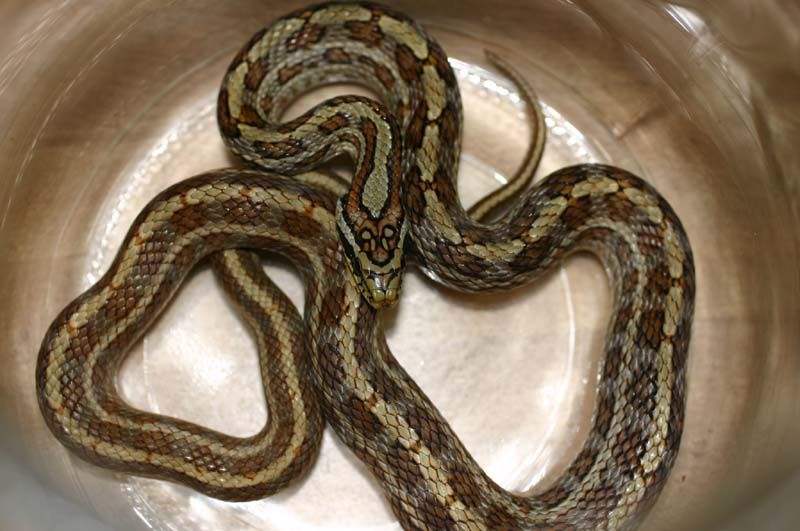Posted by:
ratsnakehaven
at Tue Dec 22 15:35:23 2009 [ Email Message ] [ Show All Posts by ratsnakehaven ]
In the spirit of a previous strand on localities and for Christmas, in general, I'm going to talk about bimaculata, localities, and show some specimens I've had in the past and present.
Elaphe bimaculata, the Chinese twin-spotted ratsnake, comes from a fairly small range for a species of ratsnake, in the lower Yangtze River Basin. It is a subtropical region of China; but bimacs are a montane snake in the sense that they inhabit foothills and medium elevations of surrounding mountains. So, the climate for them is warm temperate, with cold temps in winter causing them to brumate, at least partially. They may be opportunistic baskers.
The reason this is suggestive info is because the idea of "locality" comes into play. One wouldn't think there would be much in the way of localities with such a limited range, but several range limiting factors come into play. One is the fact that populations of bimaculata are separated by mountains and valleys. They don't seem to inhabit the valleys, which means that populations can be isolated that way and evolve differently. The other big locality maker is the Yangzte River itself, one of the largest in Asia. Snakes from south of the river are going to be isolated from snakes north of the river, even though they are the same species.
As a result of isolating factors we get locality snakes from China. The only thing is nobody knows quite where they come from, or which locality, because the collectors don't pay attention to that. So we have a species of ratsnake with a relatively small range and a really wide spectrum of color/pattern.
Part of the point of this post is to show that localities do matter and sometimes you can have a lot of locality variation in a rather small region of the world.
Here's some photos of bimaculata...
This is a bluish phase w/c adult female...

Here's a male I got from another breeder. Nice line, but kinda generic...

One of my original adult females, a blonde phase w/c bimac...

An adult female from crossing two different lines...

A baby bimac from crossing my blonde line with that of another breeder...

A 50% blonde adult male cross....

I could probably dig up some more pics of old bimacs that I've raised, but this should be enough to make some points.
Can we say that any of the bimacs in the hobby are "locality" bimacs? We know they are locality, if they are w/c, but we can't say what locality they are, so we can't really say they are locality snakes for the purpose of sale or trade. Now most bimacs have been crossed with other lines and none are pure locality snakes. I'm always on the lookout for unique imports, because of the locality factor, and with the hopes of getting a mutative morph someday.
I also believe these ideas can be applied to other species. One that I work with, that is similar to the corn snakes being discussed back in October, is the Emory's ratsnake, Pantherophis (guttatus) emoryi. This species is a good species for locality differences, imho.
Have a great holiday week, all. Cheers...Terry
-----
Conserving reptiles by helping to protect habitat...
www.ratsnakehaven.com
www.scenicsantaritas.org
[ Hide Replies ]
 Elaphe bimaculata..notes on localities.. - ratsnakehaven, Tue Dec 22 15:35:23 2009 Elaphe bimaculata..notes on localities.. - ratsnakehaven, Tue Dec 22 15:35:23 2009
|





